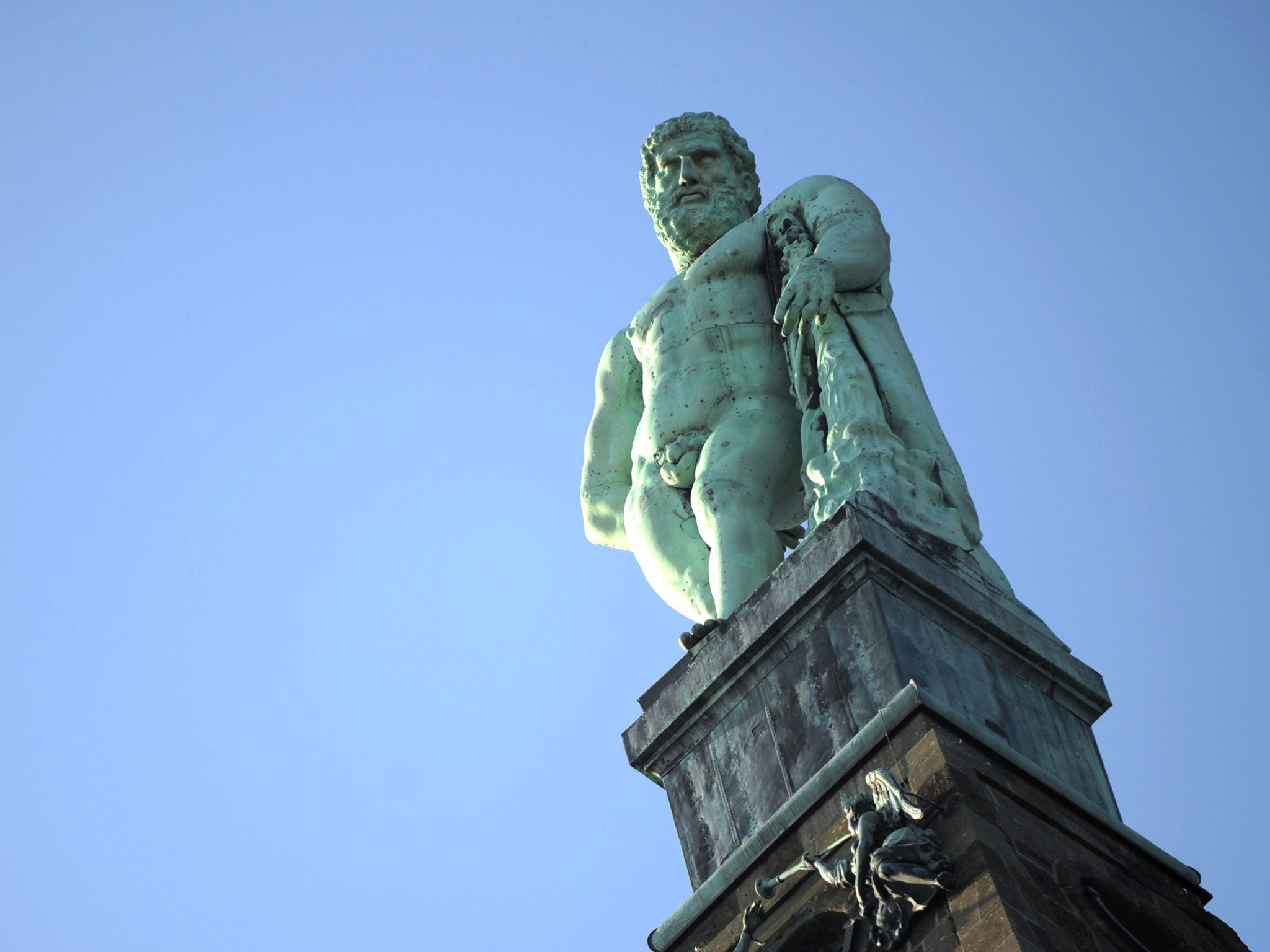Postcard from... Kassel

Kassel’s 17th century Wilhelmshöhe “mountain water park” in central Germany is about as close as you can get to a Baroque Disneyland. It boasts an imposing Hercules statue which towers above a massive 350-yard-long man-made waterfall, a fairytale castle, romantic gardens and a geyser-like “Grand Fountain”, which relies on water pressure alone to spurt a 150-foot high jet into the air.
The complex, which the Landgrave of Hesse started building in 1689, has been described as the “most grandiose combination of landscape and architecture that Baroque ever dared”, yet many in Kassel, located about 250km north-east of Cologne, used to complain that Europe’s largest hillside park had not been afforded the kind of recognition that it deserved. Germany’s ill-fated Kaiser Wilhelm II was the last person to give the park any kudos when he made its castle his official summer residence at the turn of the 20th century before plunging Europe into the catastrophe of the Great War.
UNESCO has now come to the rescue: on 23 June the park was put on the list of the organisation’s world heritage sites where it now ranks alongside Sicily’s Mount Etna and Japan’s Mount Fiji as place of global cultural importance. The accolade has come as a welcome boost to Kassel, which used to rely mainly on it famous Documenta contemporary art shows to attract visitors – yet they only take place every five years.
Kassel is now covered in posters celebrating the park’s new status. Even the city’s mayor, Bertram Hilgen, describes it as the “crowing recognition” of the park’s architectural worth.
Join our commenting forum
Join thought-provoking conversations, follow other Independent readers and see their replies
Comments
Bookmark popover
Removed from bookmarks